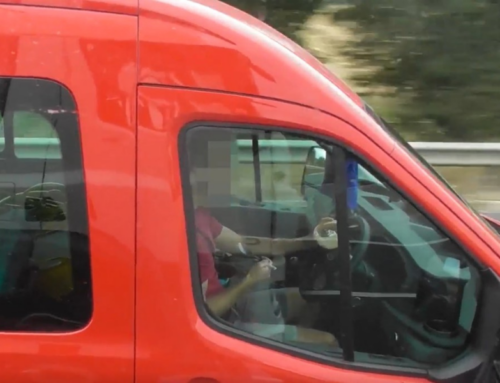The outlook for managing drivers and vehicles in 2021
First of all, the team at Driving for Better Business would like to wish everyone in our community a very Happy New Year! 2020 was an extremely difficult year for many of us, including those of you who are involved in managing drivers, and the hope is that 2021 will bring some relief and a gradual return to normal. For the time being though, that still seems to be a little way off.
The latest lockdown, which the government appears to expect to be in place for at least the next 2-3 months, with some restrictions staying in place for much of the year, means those who are managing drivers and vehicles have to continue to adapt to the current situation.
Here then, are eight key things to think about when planning for 2021.
PEOPLE
Increased demand
If your drivers are part of the home delivery network, the last few months have probably been extremely busy for you – and may well get even busier. This challenge is then compounded when some staff may be having to self-isolate, and others have to pick up the slack. The risk of driver fatigue will be high but your duty to manage it, and not impose unrealistic work schedules, hasn’t changed.
Driver recruitment
Many firms providing essential services have had to recruit large numbers of drivers to keep up with demand and this may well continue into 2021. Restrictions, including social distancing, have then often made established induction and training programmes difficult to deliver. It is so important to ensure the induction is as comprehensive as possible, and vital that new drivers are familiar with the standards of on-road behaviour and vehicle checks as laid out in your driving for work policies. Make plans to fill any driver training gaps at the earliest opportunity, when restrictions allow.
Wellbeing
This is a highly confusing and stressful time for most people. Drivers, and indeed all employees could have significant concerns for the welfare of family and close friends that are playing on their minds, including employment concerns for themselves and their partner, health concerns for older relatives, home schooling or childcare issues, etc. Those with underlying issues may also be concerned about their own health. Sensitive management of your people is essential for their continued welfare and to keep the business running efficiently. Also, while COVID is foremost in everybody’s minds at the moment, remember that colds and flu are still with us throughout the winter period.
VEHICLES
Unused vehicles
You may have company car drivers working from home, with the cars getting little if any use, or car/van drivers on furlough whose vehicles aren’t moving at all. Where possible, these vehicles need to be regularly started and moved, and when the restrictions start to lift, plans need to be in place to ensure a thorough pre-use check, including tyres and fluids, as well as checking for nesting animals or rodent damage under the bonnet. Our free driver app and management portal is a great way to help you and your teams do this.
Scheduled maintenance
For those providing essential services, there is the risk that regular and scheduled servicing and maintenance could slip with the demands of an increased workload. As with the MOT suspensions last year, there is no reduction in your duty to ensure full vehicle roadworthiness at all times. Make sure all drivers, including any new recruits, understand the importance of pre-use vehicle checks, and ensure that regular maintenance is kept up date, particularly if servicing and maintenance is outsourced and availability is limited. Tyres are one of the key things to keep a check on, with consistently poor weather conditions over the next few months. Make sure tyre pressure, condition and tread depth are checked regularly.
OPERATIONS
Modal shift
The continued restrictions have meant that many of the initial changes in working and vehicle use have become ingrained and are likely to become more permanent. Business car mileage, while it will increase again once restrictions are lifted, is likely to stay lower overall, as a greater level of working from home, and the use online meeting software, becomes accepted practice. The increased use of online ordering and home delivery will also likely mean an overall increase in commercial vehicle traffic on the roads, and particularly the demand for LCVs is likely to remain high and increase further.
Last mile delivery
Part of the extra capacity for last mile delivery has come from other smaller businesses supplementing their reduced income by taking on outsourced delivery work from the large courier firms, and utilising their own vans for local deliveries. Vehicle operators in this space need to make sure this additional utilisation of their drivers and vehicles is managed properly through appropriate driving for work policies and procedures, with proper vehicle checks and maintenance, particularly tyres, again playing an important part.
Housekeeping
If you didn’t already do this in 2020, take the start of the new year as an opportunity to review your fleet housekeeping ensuring policies, procedures and record keeping as are as effective as possible, and look for opportunities to improve. The economic landscape is going to be extremely challenging for some time to come and firms should be taking every opportunity to improve efficiency and performance. Look at some of our good practice case studies for inspiration.
Those are some of the important topics we will all need to be aware of throughout the year, when it comes to managing drivers and vehicles – however it pans out. Here’s hoping for a return to normality as soon as possible.






